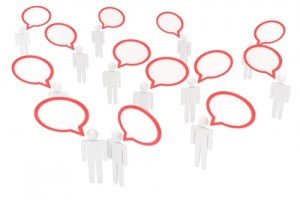Press release writing and distribution part two: finding a great story
We’re still way off the bit where you actually write your press release – so get your finger off your computer’s ‘on’ button. You need talk to your colleagues or your customers.
Before you can have a press release you need a story. ‘Stories’ are what journalists normally call ‘articles’ (or bloggers call ‘posts’). As the whole point of this process is to get journalists to write something in particular, the language of PR (or better, media relations) closely follows the language of journalism. So we need a good story.
What makes a good story? To work that one out we have to think about what journalists want to write about. Journalism students usually spend a whole term studying what I am going to explain here in one paragraph.
As a general rule, good stories are unexpected. Interesting perhaps, but definitely unexpected. If you’ve ever wondered why much news we see is bad it’s because we generally expect good things to happen in life. Good things are rarely unexpected, so they rarely make the news. A story also needs to be current. People aren’t interested in things that happened ages ago, unless the event is being revealed for the first time.
So look around your organisation (or your client) and see if you can spot the things that are unexpected and have never been revealed before to the wider public. There are a few things that can support a story – ‘boost its news value’ a news editor might say. These things, very roughly speaking, are celebrity, power and money. The more people affected by a story, the better its value. Celebrities boost news value. Obviously, some things are never going to be sexy but if you’re story has got such an angle then play it up. Often in the trade press a good way in is to look out for hot topics in a particular industry. Look for a topical application of your product – for example a green or socially responsible aspect – or a customer that is already in the limelight. Don’t be ashamed to piggy-back the issues of the day.
Talk to your colleagues and listen to what’s going on. Think of a list of things that may be strong enough to make a good press release. And if your boss insists on dictating the subject of your press release, try thinking around it to see if there is a better ‘angle’. Here are some story-finding tips:
• Talk to your colleagues
• Talk to your customers
• Look for milestones – the first, the 1,000th for example
• With products, it’s often the benefit for the customer rather than the product function that is the story
• Consider surveying your customer base and use the results as a story
• Think laterally – could your story provoke interest in other industry sectors?
• Tap into an existing hot topic
• Consider relevant forthcoming events and time releases to coincide with them
So, you’ve worked out a great story, now it’s time to start writing, yes? Nope. Once you’ve decided on your story there are a few things you need to collect before you can write your release. You can obviously add things in later on but it’s best to start with as much in the bag as possible before writing. The things you need are the building blocks of any story – facts and quotes. Facts and quotes are what journalists use to make stories so that’s what we need to give them.
Facts are quantifiable definites. How big, how much, how long – that kind of thing. Facts are the most fundamental part of any story. You should aim to answer five questions – the “who, what, where, when and why”. If any of these answers are missing you reduce the chances of getting coverage.
Quotes are the colourful, subjective bits of the story. This is where you can attribute a colourful string of nice but otherwise meaningless adjectives to your spokesperson. They don’t need to have actually said anything – by all means make quotes up (your boss should sign it off anyway), but quotes are often better if they are ‘for real’ and in colloquial (but grammatically correct) language. Don’t go mad on quotes, you only need a couple.
Take a look at the releases on the ResponseSource Press Release Wire news feed, you’ll see a mixture of good and not so good releases. The better ones comply with a lot of the news value and content points made above. Of course you’ll also see where rules can sometimes be broken to good effect, there is no exact science in press release writing. But if you stick to these guidelines you’ll stand a much better chance of creating a winning press release.
Go to the next in the series: Press release writing and distribution part three: structuring your news release
Check out all the posts in our full blog series on press release writing and distribution



